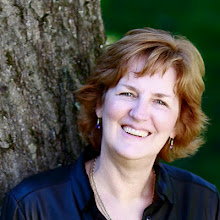Please join me in welcoming Colette Martin, the blogger behind Learning to Eat Allergy-Free. I met several children with Eosinophilic Esophagitis at National Jewish Health. These kids are amazing! Many of them can eat only a handful of foods or less, but with the miracles of science, they are living a normal life.
******************************************************************
When my son was diagnosed with eosinophilic esophagitis (EE, or EoE) in 2001, doctors understood very little about the disease. It was his gastrointestinal specialist who initially made the diagnosis, following an endoscopy of his esophagus. The inflammation was clear, but not the cause.
The road to Patrick’s EE diagnosis was long and stressful. It was a bit like an episode of House, where the doctors treat for everything they can think of, the patient gets a little bit better, then worse yet again. As an infant, Patrick was treated for colic. In elementary school he was tested for lactose intolerance and indeed determined to be intolerant. But just avoiding milk didn’t resolve his symptoms. Next it was acid reflux; the purple pills seemed to help for a while, but masked the real problem. It wasn’t until we determined that he was allergic to milk, wheat, soy, eggs, peanuts, and eliminated those foods, that he started to get better.
When my son’s GI specialist suggested it could be EE, I started researching. The little information I could find talked about children with feeding tubes (in the most extreme cases of EE the patient can’t tolerate any protein at all), but we also found some descriptions where allergies to a limited list of foods would trigger the EE. When we read how patients described the disease we both said, “Ah ha! That’s the answer.”
Because the disease is unlike any other, the symptoms can be very telling. Kids will say things like, “It feels like something is stuck in my throat, ” or, “My throat is closing up, ” or, “My throat feels fuzzy.” But you may not hear any complaints at all, because this is just normal for your child.
EE sufferers may cough or gag to try to get the food unstuck. During what I call an EE episode, a child may hold their chest, or complain that their chest hurts.
Children with EE may eat slowly – not because they aren’t hungry or are picky – but simply because it’s hard for them to get the food down an inflamed esophagus. Your child may be the last to leave the table or leave their meal unfinished. They may require a great deal more liquid to get the food down, especially with certain foods. My son found lettuce extremely difficult to swallow, whereas mashed potatoes would go down easily.
With an EE reaction, the esophagus becomes inflamed. Imagine a rash up and down the esophagus that causes it to swell and close up. And when the esophagus swells, food gets stuck and it can be very painful. Another key symptom is vomiting – when the esophagus closes up there is no place for the food to go but up.
It is especially hard to determine what foods cause this autoimmune reaction, because it may not be an immediate reaction and it may take days for the esophagus to clear up once it swells. My son didn’t react at all to scratch tests; it was a combination of blood tests and observed reactions to food that allowed us to confirm his food allergies.
If you suspect your child has EE, you aren’t alone. Approximately one in every 2000 people suffer from EE. Traditional food allergy symptoms include rashes, gastro-intestinal symptoms, and – in the most severe cases – anaphylaxis. With EE the primary symptom is inflammation in the esophagus.
Organizations including the American Partnership for Eosinophilic Disorders support the community and fund research to find a cure. I urge you to visit their site to find out more. You can also learn more about my family’s journey with EE at Learning to Eat Allergy-Free.
******************************************************************
Colette Martin is a food allergy mom, an allergen-free baker, and author of Learning to Bake Allergen-Free: A Crash Course for Busy Parents on Baking Without Wheat, Gluten, Dairy, Eggs, Soy or Nuts. When her son was diagnosed with eosinophilic esophagitis in 2001, triggered by allergies to wheat, milk, eggs, soy and peanuts, she had to reinvent how her family ate. Having first learned to bake in her grandmother’s kitchen with wheat, butter, milk, and eggs, Colette understands first-hand what it means to transform her kitchen to accommodate multiple food allergies. As she modified her recipes to eliminate the top eight food allergens and gluten, she discovered her own intolerances to wheat and soy.

 May 29th, 2012
May 29th, 2012  Nancy
Nancy 
 Posted in
Posted in